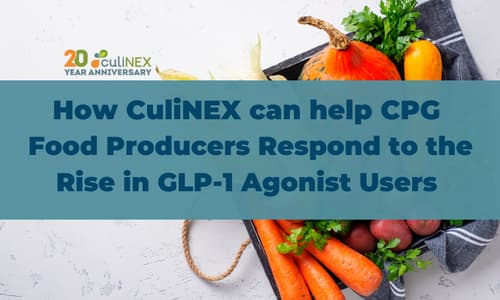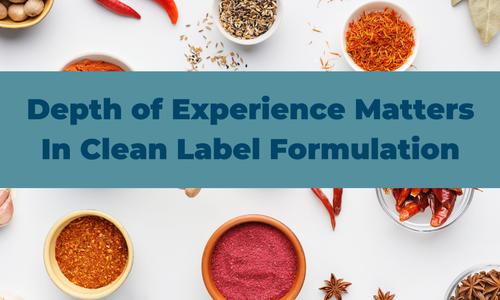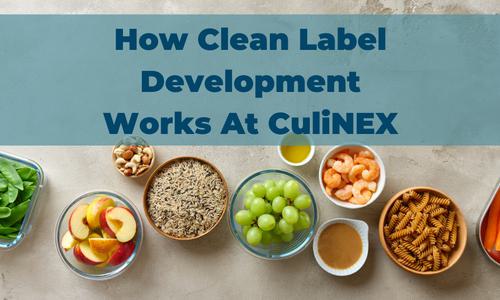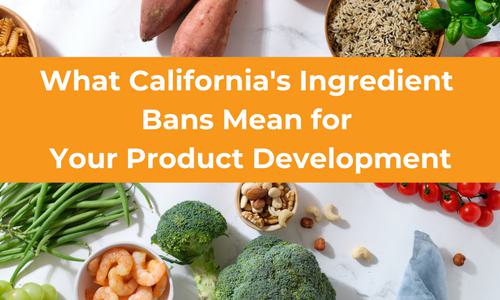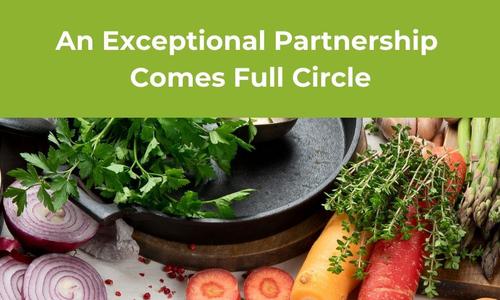
Creating Earth-Friendly Foods in 2025
On Earth Day 2025, we’re taking a fresh look at environmental stress and our global food system. Every part of the supply chain presents both challenges and opportunities, from agricultural practices to packaging, food waste, energy consumption, packaging, food preservation, and of course ingredients and formulation. At CuliNEX, developing planet-friendly foods isn’t just something we talk about—it’s been central to our mission for twenty years.
In honor of Earth Day, here are some of the sustainability initiatives and challenges we’re focused on in 2025.
Sustainability Efforts That Inspire Us
Investing in Renewable Energy Across the Food System
Energy consumption continues to be one of the food industry’s biggest environmental footprints, but the good news is, innovation is accelerating. More food companies are now integrating renewable energy into their operations—not just for brand optics, but to build resilience and long-term cost savings.
In 2025, more manufacturing facilities are moving toward net-zero goals, powered by solar arrays, wind farms, or innovative waste-to-energy systems.
Urban farming projects like Oishii’s vertical strawberry farms continue to inspire us. Their tech-forward, pesticide-free urban spaces reduce food miles and offer a glimpse into scalable, local food production.
Soil Health and Regenerative Ag: From Niche to Necessary
At this year’s Natural Products Expo West, we saw dozens of organizations dedicated to regenerative agriculture. Large-scale ingredient suppliers are investing in regenerative practices, finally creating the infrastructure needed to support bigger brands.
We’re excited to see regenerative ingredients moving beyond early adopters and into the mainstream, though scale is still an issue. Many of these ingredients are still single-origin and limited in supply. However, demand is rising, and that’s pushing the industry to innovate.
We’ve worked with both emerging brands and established companies exploring how to integrate regenerative practices, and we’re optimistic: what once felt like a movement is becoming a market force.
The Rise of Upcycled Ingredients
CuliNEX is a member of the Upcycled Food Association. We’re encouraged to see growing adoption of ingredients once considered waste: think coffee grounds, fruit pulp, veggie peels, and spent grains.
Our early work with green banana flour was just the beginning—now we’re testing everything from apple pomace to aquafaba. These ingredients not only reduce food waste but can help balance cost and nutrition.
While the supply chain for upcycled ingredients is still maturing, we’ve seen big strides this past year. Ingredient companies are launching upcycled lines, and more brands are finding ways to integrate these into profitable, consumer-friendly products.
Challenges We’re Tackling Head-On
Sustainable Sourcing at Scale
This year we’re seeing more clients building sustainable ingredient sourcing into their strategic plans, but scalability is still a barrier. At CuliNEX, we help clients navigate these early-stage sourcing hurdles. We’re aware that many ingredients with great environmental credentials (like regenerative grains or upcycled flours) aren’t yet cost-effective for large-scale food manufacturing.
We can help you reach your sustainably sourcing goals by exploring blends, pilot sourcing strategies, and co-manufacturer partnerships to make more sustainable formulations a reality today.
Consumer Education & Certifications
Sustainability claims are everywhere. But how do consumers know what’s real?
We’re seeing increased adoption of third-party certifications—from climate labeling to regenerative sourcing—but consumer understanding is still catching up.
Certifications can be expensive and complex, but they offer transparency and accountability that will only grow in importance. And we can help you get your packaging and labeling up to date.
We envision a future where food labels do more than tout calorie counts—they’ll tell you the environmental impact of what’s in your cart. We’re not there yet, but we’re closer than ever.
Looking Ahead: Working Toward Real Solutions
Since our founding in 2005, long before Clean Label was a term in common use, we’ve been focused on purposeful food product development. Today, that means we’re staying deeply engaged with the sustainability practices happening across the food industry.
Creating more sustainable food products isn’t easy. Every product involves trade-offs—on sourcing, cost, scalability, packaging, and performance. Our clients bring real-world constraints, and we work together to find real-world solutions.
Still, we’re more optimistic than ever.


